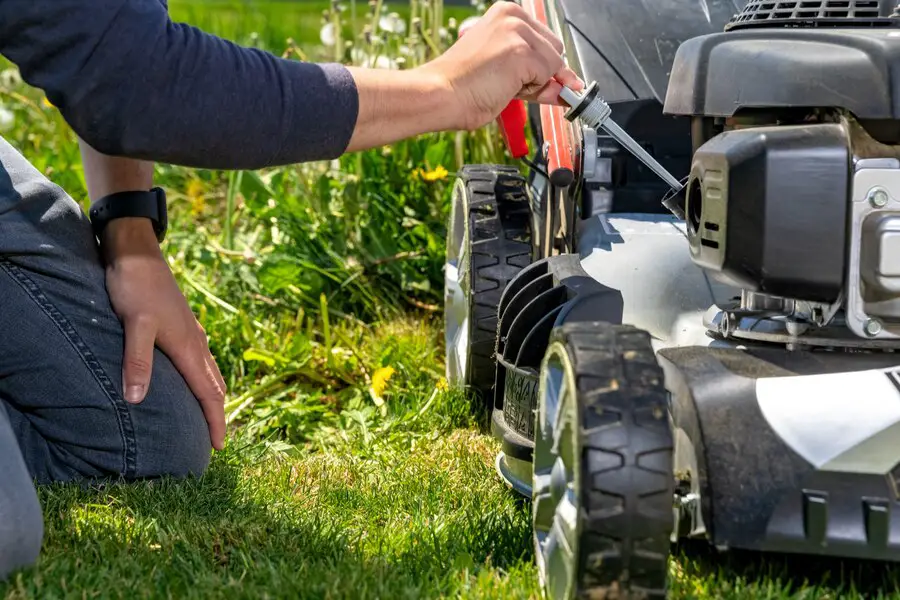
Introduction: Why Spark Plug Troubleshooting is Important
Lawn mowers are a crucial part of maintaining your garden, but like any mechanical tool, they can experience problems from time to time. A common issue many mower owners face is a faulty spark plug. Without proper function, the spark plug can prevent the engine from starting or running efficiently. In this guide, we’ll cover essential lawn mower spark plug troubleshooting tips to help you identify and fix the problem quickly.
1. Understanding the Role of a Spark Plug in Your Lawn Mower
Before diving into troubleshooting, it’s essential to understand the role of the spark plug. In a lawn mower, the spark plug provides the electrical spark needed to ignite the fuel in the engine. Without this spark, the engine cannot run, which is why a malfunctioning spark plug can quickly lead to issues such as a mower that won’t start or runs inconsistently.
2. Signs of a Faulty Spark Plug
Knowing the signs of a faulty spark plug will help you diagnose the issue before it causes too much trouble. Here are the most common symptoms to watch out for:
A. Engine Misfire or Failure to Start
If your lawn mower engine struggles to start or fails to start at all, the spark plug could be the culprit. This is especially true if the engine turns over but doesn’t fire up. A worn or dirty spark plug will have trouble generating the spark needed to ignite the fuel.
B. Poor Engine Performance
A spark plug in bad condition can cause the engine to run poorly, including stalling, sputtering, or losing power during operation. If the mower starts fine but doesn’t perform well while cutting, a spark plug inspection is a good place to start.
C. Excessive Fuel Consumption
A faulty spark plug can cause the engine to use more fuel than necessary, as it struggles to ignite the air-fuel mixture correctly. If you notice that you are refueling more often than usual, it may be due to an inefficient spark plug.
3. Step 1: Visual Inspection of the Spark Plug
Start by examining the spark plug for any obvious signs of damage. This will often give you a clue as to whether it needs cleaning or replacing.
A. Checking for Wear and Tear
Look for signs of physical wear, such as cracks or chips on the porcelain insulator. Also, check the electrode for erosion or breakage. If you see any significant damage, replacing the spark plug is necessary.
B. Identifying Carbon Build-Up
A common issue with spark plugs is carbon build-up, which can affect performance. This often appears as black, dry soot around the electrode. If the build-up is light, cleaning the plug may solve the issue. Heavier build-up, however, may require replacing the plug altogether.
4. Step 2: Cleaning the Spark Plug
If the spark plug shows signs of dirt or build-up, cleaning can restore its function. Here’s how to clean it:
A. Materials You’ll Need
- Wrench or socket to remove the spark plug
- Wire brush
- Spark plug cleaner or carburetor cleaner (optional)
- Compressed air (optional)
B. Cleaning Process
- First, remove the spark plug using a wrench or socket.
- Use a wire brush to scrub away carbon or dirt from the spark plug’s electrode and insulator.
- If the build-up is stubborn, use a cleaner to loosen it up.
- You can also use compressed air to blow away remaining debris.
- Inspect the spark plug again for any cracks or damage. If it looks clean but still damaged, replace it.
C. When to Replace Instead
If cleaning does not improve the performance of your spark plug, it’s time to replace it. Additionally, if the spark plug’s electrode is worn down too much, cleaning will not restore it to full function.
5. Step 3: Checking the Spark Plug Gap
Proper gap settings are crucial for optimal engine performance. A gap that is too wide or narrow can prevent the spark plug from igniting the fuel-air mixture correctly.
A. Importance of Correct Gap Settings
The spark plug’s gap ensures that the electrical spark is strong enough to ignite the fuel. If the gap is too wide, the spark may be weak, causing misfires. If it’s too narrow, the spark may not occur at all.
B. How to Measure and Adjust the Gap
To measure the gap, use a spark plug gap tool or feeler gauge. Simply insert the gauge into the gap and see if it fits snugly. If the gap is too wide or narrow, use the tool to gently adjust it to the correct setting as specified in your lawn mower’s manual.
6. Step 4: Testing the Spark Plug
After cleaning and adjusting the gap, it’s essential to test the spark plug to ensure it’s working properly.
A. Using a Spark Plug Tester
A spark plug tester is a simple tool that can help you check if the spark plug is producing a spark. To use the tester, attach it to the spark plug and turn the engine over. If the tester shows a bright, blue spark, your spark plug is in good condition. If not, it’s time to replace it.
B. What to Do If the Plug Is Faulty
If the spark plug fails the test, replace it with a new one that meets your mower’s specifications. A faulty spark plug can’t be repaired and should always be replaced.
7. Step 5: Replacing the Spark Plug
If cleaning and testing didn’t resolve the issue, it’s time to replace the spark plug. Here’s how:
A. Selecting the Right Spark Plug
Make sure you purchase the correct spark plug for your lawn mower’s model. Check the owner’s manual for specifications, including the plug’s heat range and electrode material.
B. How to Install the New Plug
- Insert the new spark plug into the engine’s spark plug socket.
- Tighten it by hand, then use a wrench to secure it (but avoid over-tightening).
- Reconnect the spark plug wire, ensuring a firm connection.
8. Preventative Maintenance for Your Spark Plug
To avoid frequent spark plug issues, incorporate regular maintenance into your lawn mower care routine. Change the spark plug at least once a season or as recommended by the manufacturer. Additionally, clean the plug periodically to prevent build-up and maintain optimal performance.
9. When to Seek Professional Help
If you’ve followed these troubleshooting steps and your mower still won’t start or perform properly, it may be time to consult a professional. There could be deeper mechanical issues, such as problems with the carburetor, ignition coil, or fuel system, that require expert attention.
10. Conclusion
Troubleshooting and maintaining your lawn mower’s spark plug is a straightforward task that can save you time and money. By following these tips, you can ensure that your mower runs smoothly and efficiently, making your lawn care easier and more enjoyable. If all else fails, don’t hesitate to reach out to a professional mechanic for help.
FAQs
1. How often should I replace my lawn mower’s spark plug?
It’s recommended to replace the spark plug at least once a year or after every 100 hours of use, depending on your mower’s manufacturer instructions.
2. Can I clean a spark plug instead of replacing it?
Yes, if the spark plug is not severely damaged, cleaning it can restore its function. However, if it’s worn or cracked, replacing it is necessary.
3. How do I know if the spark plug gap is set correctly?
Use a spark plug gap tool to measure the gap. Refer to your mower’s manual for the correct measurement, usually between 0.020 and 0.030 inches.
4. Why does my lawn mower consume more fuel than usual?
Excessive fuel consumption can be caused by a faulty spark plug, which results in inefficient combustion. Check the spark plug for wear or carbon build-up.
5. Can a bad spark plug cause my lawn mower to stall?
Yes, a worn or dirty spark plug can cause the engine to stall because it cannot ignite the fuel properly.



